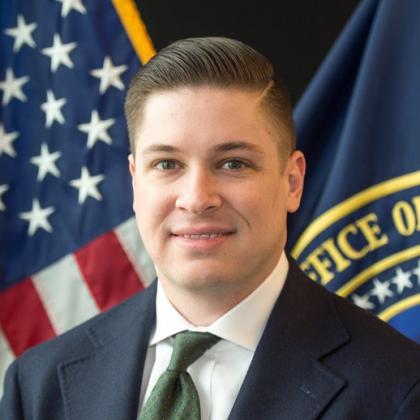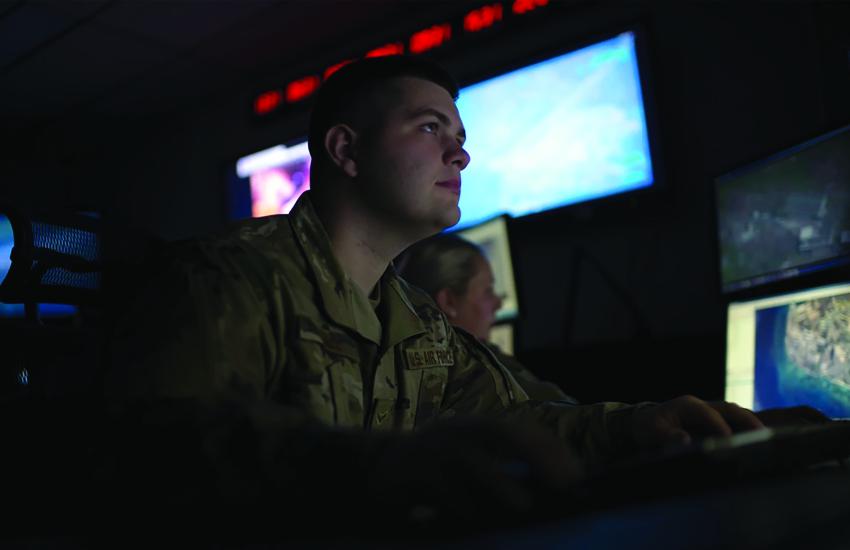Exploring the Frontiers of Potential Technology
The Office of the Director of National Intelligence (ODNI) develops new technologies for future decision-makers. This may sound like the next gadget for a James Bond movie, but reality may be a little less flashy.
“Finding the best technological solutions to the problems we have in the intelligence community, so we can perform the collection and analysis that we need, to surface insights to policymakers,” was how the Office’s Science and Technology department mission was defined by John Beieler, its director. “It’s getting the right tech into the hands of the right people.”
The Intelligence, Science, and Technology Partnership, or In-STeP, is the program that looks for the “right technology” beyond the frontiers of what is available today. Most innovation happens in the private sector, away from the often classified and deliberately siloed world of intelligence. Many businesses that could potentially bring a solution are unable to offer it to services that may desperately need it.
“It’s often hard to figure out how to engage with the intelligence community,” Beieler said. “[With In-STeP] we can do the legwork of getting them in front of the relevant players within the intelligence community.”
One of the biggest challenges lies with recognizing and processing acquired data.
“We have massive amounts of data, and we need new software,” said Cortney Weinbaum, senior management scientist at RAND, a think tank.
While the ODNI declines to comment publicly on specific technologies it’s seeking, Weinbaum’s work points toward its interests and difficulties.
And in terms of how it is best to approach nimbler operations, a former member of the office, now employed by industry, has other hints.
“You don’t really want to bring proprietary, exclusive information because the whole idea is it’s going to be shareable,” said Jim Richberg, Fortinet Public Sector chief information security officer. Richberg explained that the best way for small businesses to supply new developments to the ODNI is in a consortium with larger established suppliers.
Once an innovative technology is ready to be shared with many in the intelligence community, including potential rivals, the biggest hurdle still lies ahead.
“The biggest bottlenecks are probably around the inability to acquire and implement software in a timely manner,” Weinbaum said.
“It’s a long and painful process that has really nothing to do with the underlying technological widget, but it’s just kind of a policy bureaucratic process,” Beieler said. “Especially when you’re dealing with a startup, if it takes 18 months to get an ATO [authorization to operate] for a piece of software, and in that time [the company] might have gone out of business.”
This difficulty finding nimble innovators and making sure they are still in business by the time their technologies are ready to roll out is one of the main concerns in the In-STeP program.
Also, a solution may be interesting, but it usually requires an adaptation to the specific uses in intelligence. “We are interested in phenomena that definitionally other people aren’t,” Beieler explained, adding context to the type of interactions users have with systems in intelligence agencies.
Everything seems to be out of the ordinary, and it starts with input. “Our data is weird; our data is different,” Beieler said.
Therefore, meetings with potential suppliers run into the thousands yearly for this office. Crossing the finish line is hard and few make it, and those who do share some characteristics.
“Folks that understand our problem set and are able to address things from the outset, that’s where we’ve seen a lot of success,” Beieler told SIGNAL in an interview.
The ODNI declined to further elaborate on the areas of interest, citing security issues.
Once in the program, there are other benefits. “We often have world experts ourselves, if it’s AI [artificial intelligence] or ML [machine learning] or you name it; so, companies gain things through their interaction with us that they might not have otherwise considered,” Beieler said.
Still, the program seeks cutting-edge technologies for the future, but the culture of some agencies could work against revolutionary ideas, pulling innovation in opposite directions.
“I would say [agencies] probably don’t take enough risks, among defense agencies, unfortunately, there’s an acquisition culture that is risk averse,” Weinbaum analyzed.
And therefore, programs like In-STeP are different from other better-known initiatives.
“You don’t have to be the thousand-person company to pitch it to us. I think we were a little bit more risk-accepting on some things than industry might be because of our problems. They are so weird, and our interests are so weird and diverse that we’re willing to take those shots where other people might not,” Beieler said.
Innovation is a balancing act that also draws contrasts with rival nations.
“When we look at strategic competition against our adversaries, sometimes you see a lot of hand-wringing in the press and about how can we compete. I think a lot of what we’re trying to do with In-STeP, and other programs that we’re starting up, is to harness the lifeblood of America ... getting after these hard problems and get the people in a garage making these innovations,” Beieler noted. “So we have all the fundamental building blocks as a country; we just have to rediscover these again in this new era.”
And this spirit, giving the edge in creativity due to the free flow of ideas, may also include a setback, as issues have an additional angle beyond the latest technology.

I think a lot of what we’re trying to do with In-STeP, and other programs that we’re starting up, is to harness the life blood of America.

Standards must apply to all agencies at various levels of administration, including separate jurisdictions and authorities.
Weinbaum explained this diversity within government also means there is not a centralized authority that can normalize systems. Working with less visible standards and compatibilities may deprive agencies of the opportunity to make the most of these new developments.
“Part of the problem why acquisitions are desirable is, ‘If I’m only going to be in my job for two to four years, I can see the results,’” Weinbaum told SIGNAL. “Fixing [standards and compatibility] problems is a 20 to 30-year cycle… there are disincentives why these things aren’t fixed, as it’s a leadership challenge.”
From a purely private sector point of view, some issues are addressed through the lens of those who supply suites and, therefore, need to have all standards normalized by the time they offer services to a government agency.
“We’ve got a very, very robust ecosystem, so somebody says, ‘I like this version of interoperability. I want to become a provider in fill-in-the-blank,” Richberg told SIGNAL and expanded on how application programming interfaces allow third parties to connect applications in a commercial software environment that could address specific intelligence issues and be provided to relevant agencies under a wider use case.
While this may mitigate many problems arising from more tools being developed for a wider variety of demands, placing all services under the same roof remains a challenge. And this is increasingly critical.
“The threat landscape that the intelligence community has to track has grown exponentially. While the intelligence community is, of course, large, it is not infinite, and it hasn’t grown at the same pace as the threats have,” Beieler said.
In a world where threats grow, the mission of the intelligence community—as underscored by Beieler—remains to inform hard choices to the president and other major policymakers.
Technology is a capability among many, and where rivals stand is another concern.
“Our focus is really on providing, regardless of kind, of where China or Russia, or another adversary, is in terms of technology,” Beieler said. “It’s about making sure that we are best postured to provide that sort of intelligence and to provide that strategic intelligence advantage that we are tasked with.”
For the time being, the edge seems to stay in America. “I think broadly, the U.S. remains ahead nearly across the board in many of these technology areas, but I think you see a lot of information about China being a fast follower in many areas. Also growing their own—their own indigenous capabilities and others kind of catching up with the U.S.,” Beieler said.
Therefore, the meeting the ODNI may be holding right now with a creative engineer trying to bring a new concept to the service may be key. They may be discussing a capability that, after arduous work, will keep the country ahead of rivals.





Comments